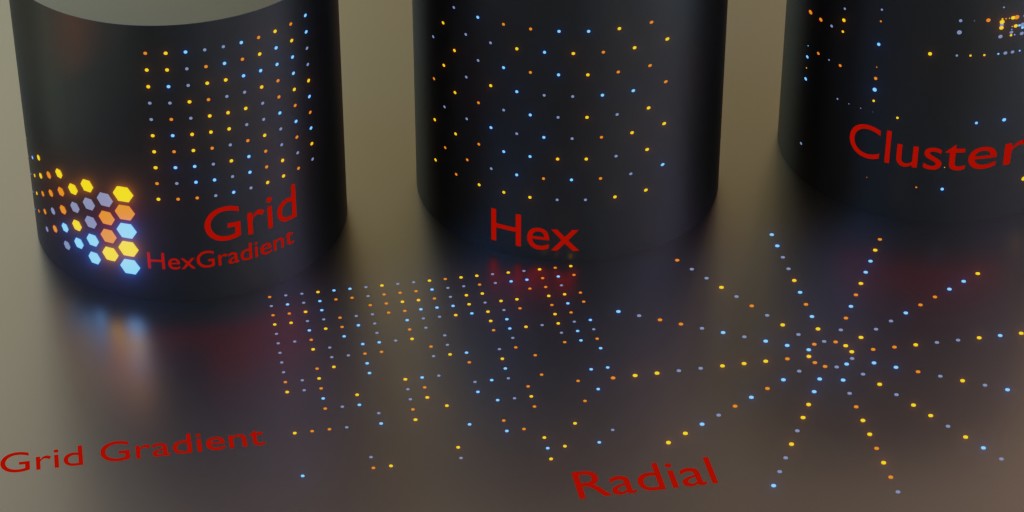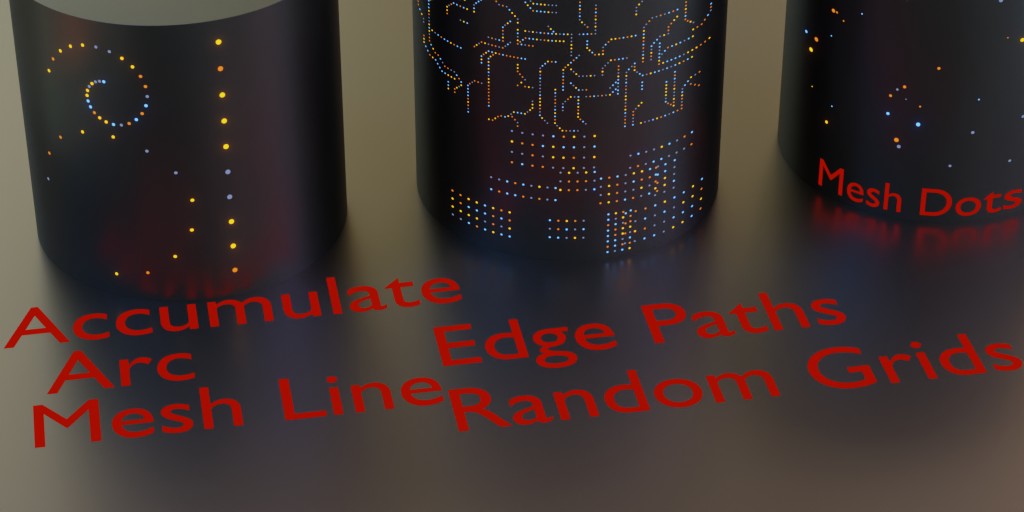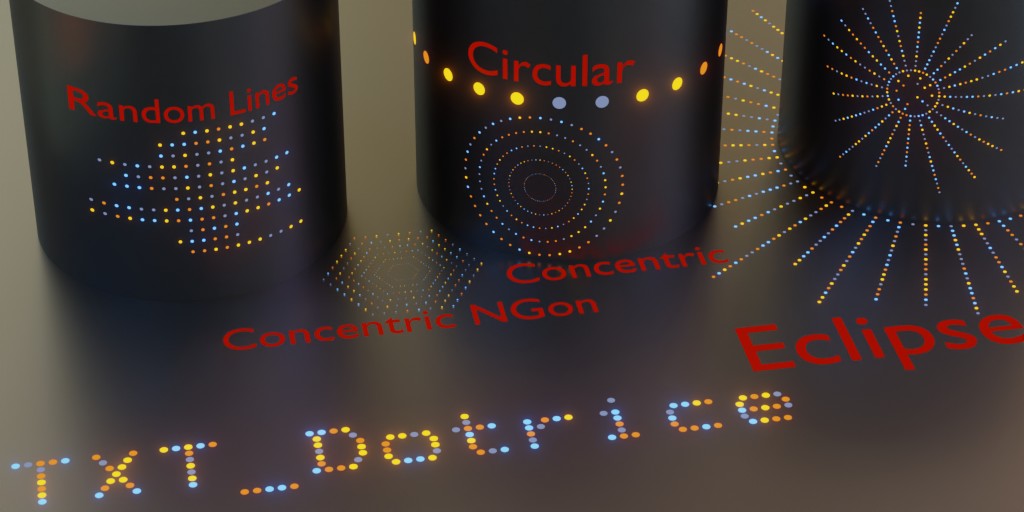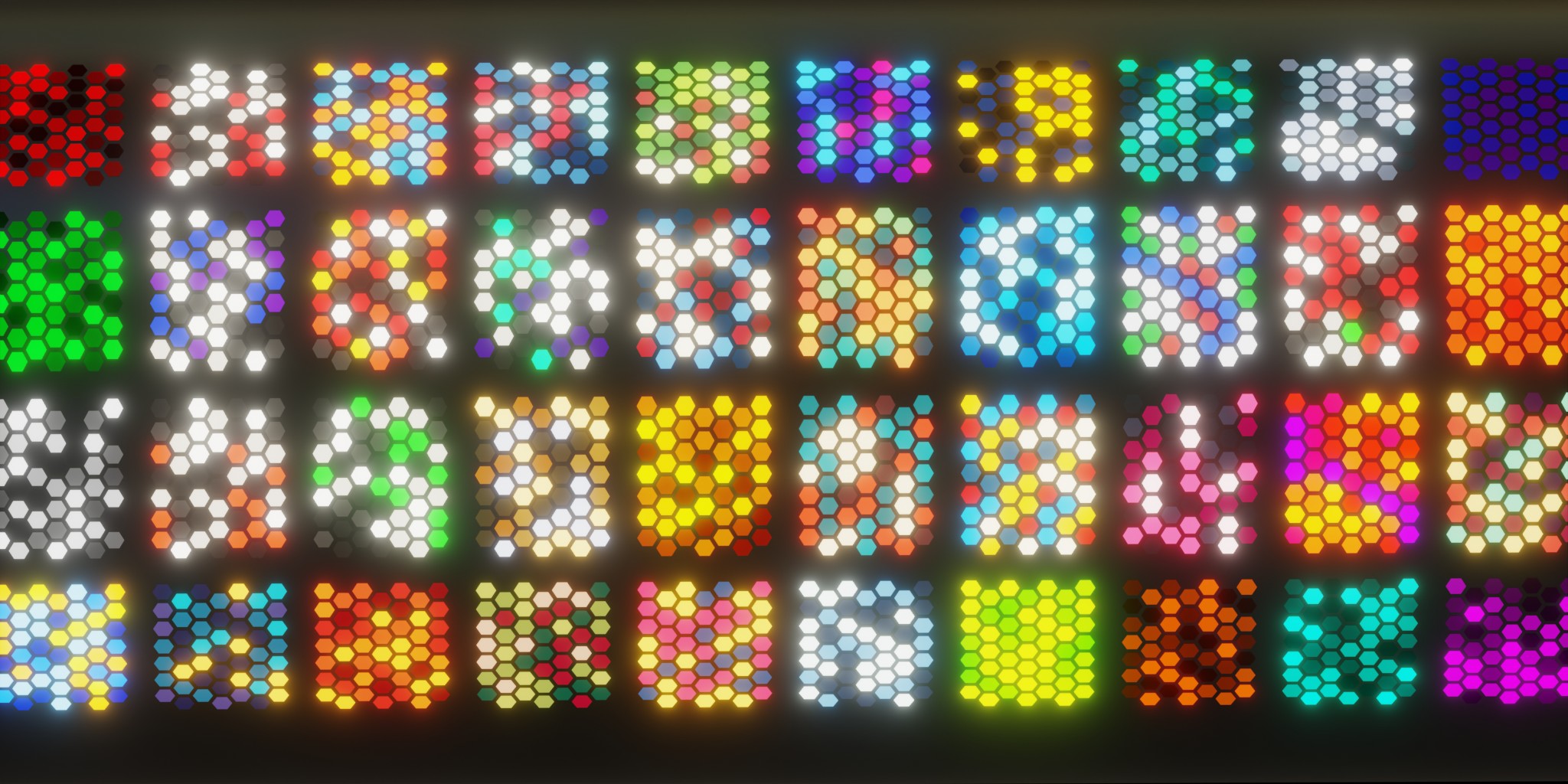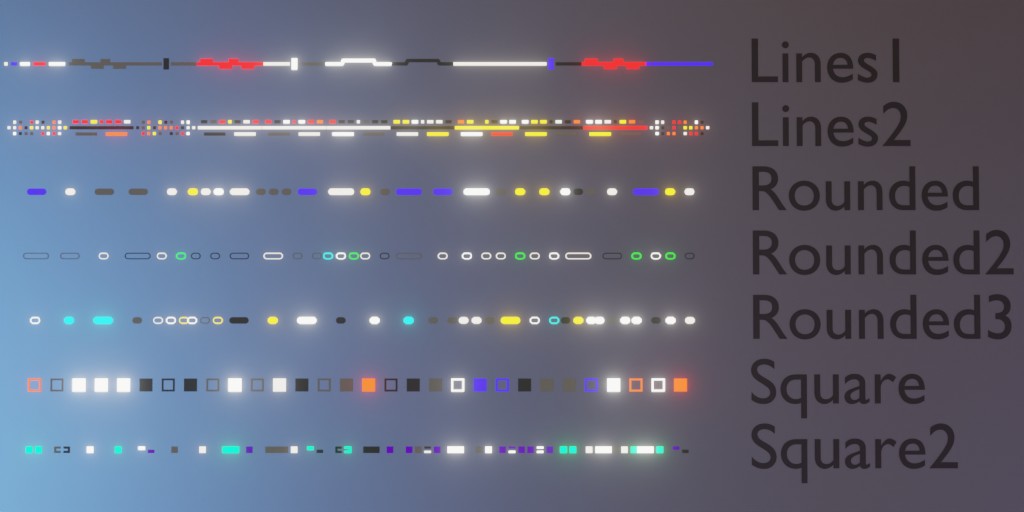Dots
Instancer v03:
All of the inserts use this geometry node or a very similar variant of it for creating the dots themselves. So since the interface is identical across all inserts I will detail its settings once here.
Selection Pct: Skip adding a dot to some points. Makes things look less uniform and more textured.
Dot Radius: how large the dots are (has no effect on dots from collection)
Dot edge count: how many edges, usually, 3, 4, 6, 8, or 16+
Material: The material to apply to the dots
Collection: The included asset file has collections with custom shapes that can be used with the dots. Import the collection (not as an instance) and add the collection here. “Dot Radius” will not affect these so use Randomize Scale below and if desired set the Min and Max Pct to the same numbers.
Randomize Scale: If true will randomly scale the individual dots. Makes things less uniform and more textured.
Scale Min Pct
Scale Max Pct
Rotate to curve normal: Rotates dots along curve normal and tangent so that they are aligned with the curve. Currently only works on flat profiles. Future versions will have more options to fine tune this.
Rotation: Some rotation options. Useful for nonplanar faces.
Dots:
Accumulate: This insert produces spirals based off of position and rotation offsets
Arc: Produces a single arc from Radius, start angle, end angle, and resolution
Bezier: Dots along a bezier line
Circular: A circle of dots. By default the dots are rotated to point outward for use on the surface of a cylinder.
Cluster: Recursively subdivide a plane and apply the shortest edge path node to randomly select some of the tines for dots. Effect is a loose grid with clusters of dots in random areas
Concentric: concentric circles
Concentric N-Gon: concentric n-gons. Defaults to hexagons
Eclipse: A circle of dots with long lines of dots radiating outward and fewer shorter lines radiating inward
EdgePath: Create a circuit trace like pattern
Grid: produces a simple X/Y grid of dots
Grid Gradient: produces a simple X/Y grid of dots with a falloff where there is a 100% chance of fill on one side and a zero percent chance on the opposite.
Hex: A hexagonal grid of hexagon dots
Hex Gradient: A hexagonal grid of hexagons scaling towards zero in one direction
Radial: Lines radiating outward from the center
RandomLines: A central line with lines of random length extending out perpendicularly.
Rings: Arcs of random degrees and thicknesses. Animated rotation through Geometry nodes.
TXT Dotrice: Dot based font.
The mesh inserts below are self explanatory. The difference here is that they use their underlying geometry and are thus editable. So for example if you needed to add dots to a particular panel line you can use the Mesh line insert. Add it, then enter edit mode to extrude the vertices along the required edges.
Mesh Line: Dots along a mesh line
Mesh Dots: Dots scattered on the face of a plane
Mesh Edgepath: A plane subdivided and passed through edge paths to curves
Mesh Grids: A Mesh plane with scattered random grids
Mesh Line 2: A mesh line with smaller mesh lines radiating outward on one axis
Mesh Lines: A plane with random lines of dots instanced
Mesh RandomLines: A mesh line with smaller lines of dots radiating out on each side
Dots-Custom:
Grid (Circle, Hex, Imperial2, etc…): These grid inserts have the custom dot collections built into them for quick/convenient modeling.
Mesh Line (Chaotic, Circle, Hex, etc…): These line inserts have the custom dot collections built into them for quick/convenient modeling.
Dots-Materials:
Also included are 64 material inserts. Materials can be added to the scene in the normal kitops way, however, you must manually update the material setting in the instancer section of the geometry node.

